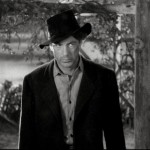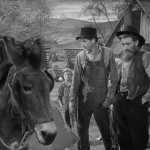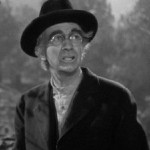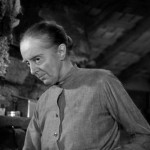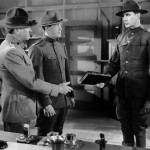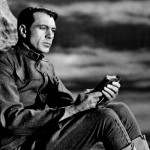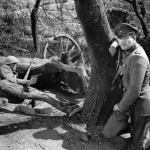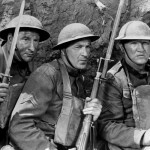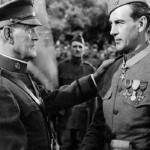
Sergeant York – 1941
Shameless!! This was a shameless example of a war-time propaganda film! It was pure and unadulterated, pro-war, patriotic, join the army propaganda! And darn it if it wasn’t a pretty good movie as well!
Gary Cooper played the role of the famous WWI hero Sergeant Alvin York. But the first hour and 45 minutes of the 2 hour and 15 minute film took place before our hero even joined the military. But believe it or not, this was the secret to the film’s success. I was expecting a war film, but it really wasn’t. It was a portrait of a war hero. The fact that the movie spent so much time developing his character, making the viewers familiar with his personality and giving them insights into the reasons for his actions during the war, made those actions so much more meaningful and amazing.
The film was based on the diaries that the real York kept. I did the research and found that for the most part, the film remained very historically accurate. There were a few details that were changed, like the size of his family and that kind of thing, but nothing very crucial. I actually wondered if all the hubbub about his fame and popularity after the war were over-inflated for the cameras. But I found that they were remarkably understated. Not only did everything in the film actually happen, but so much more, that it would take another two hours in the form of a documentary to cover all the honors and praise that was heaped upon the real York.
The story is actually a very basic one which I should be able to sum up in short order. A young and wild Tennessee hillbilly named Alvin York is a drunk and a troublemaker. He falls in love with a girl and tries to clean up his act to gain her affections. She accepts him even though he has nothing in the way of property or money to offer her. He fails in his plan to acquire his own farm and is nearly killed by a lightning bolt during a storm. He turns to religion and becomes a devout believer in the teachings of the Bible.
He is drafted into the army to fight in France during WWI. He wrestles with his conscience on the subject of killing, but when the big battle starts, he decides that more lives can be saved by killing German soldiers. He kills as few as possible and finds a way to take 132 of them prisoner. He becomes the most highly decorated American war hero ever. Noble to the end, York turns down all of the offers of money and fame. But when he returns home, he accepts a hefty gift from the state of Tennessee. Not only did they buy him his farm, they built him a big house as well. The end.
Of course, those are just the barest bones of the plot, but like I said, it was so well done, and it was a perfect role for Cooper. Cooper made me like the character even when he was being an irresponsible ruffian. Now that I have seen several movies starring Cooper, I am beginning to give him some well-earned respect as an actor. I’m starting to understand why he was so popular.
Other actors in the film who did a good job were Walter Brennan as Pastor Pile, York’s friend and mentor, Joan Leslie and Gracie Williams, York’s love interest, Margaret Wycherly as Mother York, Stanley Ridges as Major Buxton, York’s commanding officer, and George Tobias as “Pusher”, York’s Army buddy. And just as a side note, a very young June Lockhart played Rosie, York’s younger sister.
I have no real complaints about the film, except to be nit-picky. The scene of the Meuse-Argonne Offensive which took place on October 8, 1918, was very well done. The depiction of battle and slaughter were exciting to watch. American soldiers were being killed left and right, again true to reality. The one thing I didn’t like is how the dying men died. It was the only unrealistic thing about the film. In order to draw the viewer’s eyes, the men who were being gunned down would each perform the same hokey death move. They would arch their backs, throw an arm up into the air, throw back their heads, and display a look of agony on their faces. It was as if they were children being shot in an imaginary game of cops and robbers. This death move was so choreographed that it almost looked like ballet.
But other than that, it was a very good and enjoyable film to watch, made even more so because of its historical accuracy. Well done Sergeant York!
